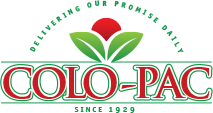
The mango is a juicy tropical fruit and it is the most commonly consumed fruit in the world. The fruit is native to Southeast Asia, and has been cultivated in India for over a thousand years. The word mango is derived from the word manga from the Indian language of Malayalam. Mangoes were first introduced to Europe in the late 15th century by the Dutch trade network between the Indian Ocean and Europe. The word manga was adopted by the Dutch, Portuguese, Spanish, and English, but, why the a was replaced by an o in Dutch, English, and Spanish is unknown. In the 17th century, mangoes were introduced to the American colonies, but they had to be pickled due to the long transportation times and lack of refrigeration. Because of this, in 18th century English, the word mango was used as a verb meaning “to pickle.” There are many varieties of mango available today, but they all share the same tropical, juicy flavor. The color of the skin and the flesh of the various types of mango can vary widely.
Mangoes are so popular, largely because they are an immensely versatile fruit. Due to their high pectin content, mangoes are great for jellies, chutneys and other preserves. Because the fruit is so sweet, it is a common ingredient in desserts like ice cream, parfait, and pie. Mangoes are not only used in sweet recipes, they are often used in savory dishes as well. The mango contains enzymes that help to tenderize meat, which makes the fruit a great component in marinades. Mangoes go especially well with lean meats such as chicken and fish. Mango salsa is a tart yet sweet alternative to traditional tomato-based salsa. In Indian cuisine, the mango can be found quite frequently, in dishes such as curried mango chicken and mango kulfi. One very common use for the mango is in beverages such as smoothies and juices. Almost any fruit juice can be taken to the next level with the addition of mango juice.
When picking out fresh mangoes, it is important to feel them by gently squeezing them. A fresh, but unripe mango will be very firm to the touch. Ripe mangoes will have a slight amount of give when squeezed. The same rules that are used to determine the freshness and ripeness of an avocado or peach also apply to mangoes. Because mangoes come in a wide variety of colors, the color of a mango’s skin is a poor indicator of freshness or ripeness. Unripe mangoes should be kept at room temperature until they are fully ripe. The longer a mango is left at room temperature, it will become softer and sweeter. Ripe mangoes should be kept in the refrigerator, where they will stay fresh for about a week. They can be skinned and chopped and kept in the freezer for up to six months. When preparing mangoes, first begin by rinsing the mango. To easily skin and chop the fruit, begin by checking for the eye of the mango. This is the little divot where the stem was, and the seed will be just behind this. Place your knife a quarter of an inch to the side of the eye, and cut downwards. Repeat on the other side. This leaves you with a disc of mango flesh, and the two “cheeks” of the mango. Then, use the knife to cut a crosshatch pattern in the flesh of the fruit. Push the skin side of the fruit towards the flesh side, and the cubes of mango will pop up, resembling a porcupine. Then, cut the cubes away from the skin. Finally, take the remaining disc of fruit, and cut around the seed.


 BACK TO PRODUCTS
BACK TO PRODUCTS